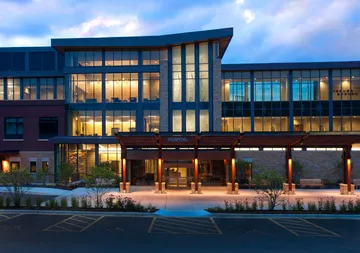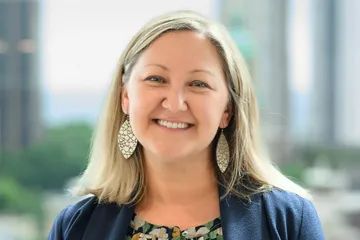Happy Staff = Happy Customers. Becoming the employer of choice by enhancing staff satisfaction was one of several goals for Monroe Clinic, a modern healthcare facility known for quality care is critical to the health and well-being of their patients, their families and the community. The other project drivers for their new Ambulatory Center are to:
- Create a flexible, adaptable environment and culture to support evolving care delivery models
- Honor patient independence and choices by leveraging technology
- Extend the brand identity and reflect the Mission:
- Create a spiritual, healing, and sustainable environment
- Create operational efficiencies leading to valued care
- Design an environment to practice team-based care, collaborative care and population health
Dave Sheedy, P.E., Principal, Kahler Slater and Cindy Werkheiser, Vice President of Service Excellence & Process Improvement, Monroe Clinic shared these drivers and the story of how these Teams are Owning Operational Change, Eliminating Waste and Working Like Clockwork Delivering Ambulatory Care in their recent Lean Construction Institute Congress presentation. Here’s what the conference audience learned:
Five of the tools that were employed at the project onset to achieve the goals were:
- Benchmarking (Seeing how successful businesses do it)
- Voice of the customer survey (Understand the needs and wants of the staff and customers)
- Current State Virtual Waste Walks (What if you went through your entire day of tasks and identified all the “wastes”. It would probably look like all the things in red below! That is what this team did.)



